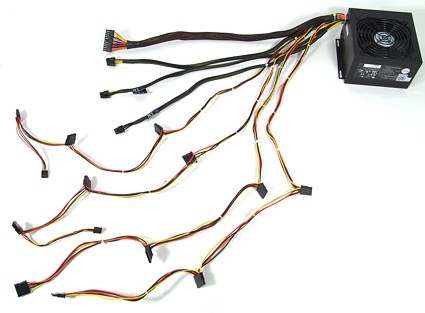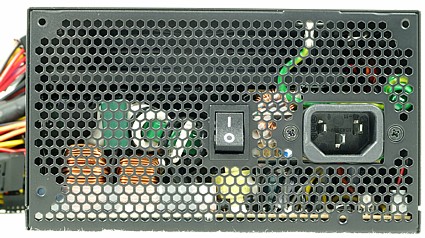The $500 Gaming Machine, 2007 Edition
Power Supply: Silverstone ST50EF-Plus
Choosing a viable power supply unit is more important than what many people think. So much has been going on in this market, and literally every component company looking to broaden its portfolio is at least considering entering the power supply space. There are literally hundreds of different PSU devices on the market, covering an incredible range of 250 W to far beyond 1,000 W. It almost goes without saying that the more power-hungry your components are, the more power the unit will require. Be careful with products with power ratings below 300 W, because there's a lot of low-cost hardware on the market. Anything at 400 W and up from a popular brand typically works for a mainstream gaming PC, but there are differences in efficiency, noise and features, and the power rating should suit the needs of your graphics solution.
Any PC with standard components, which means a powerful processor, one or two hard drives, an optical drive, a fully-featured motherboard and maybe some add-on cards will run properly with a 400-W PSU. This can include the graphics card of your choice with the exception of the current top models: A GeForce 8800 Ultra or Radeon HD 2900 XT can require up to 200 W in 3D mode - this is more than all that the other system components require put together! You'll be on the safe side with a 500-W power supply, which is why we chose one of these units. Be sure to go for 600W-700 W if you want to run two high-end graphics cards, a dual-processor system or anything else that requires lots of energy. The 1,000+ W monsters are only necessary for quad-graphics setups and extraordinary hardware.
Power supplies have a certain efficiency between their input power and their output power - the difference is dissipated as heat. Anything with an average efficiency of 80% and up is considered well designed. Spend some time to look at efficiency at low, medium and maximum load, because the unit's efficiency can vary. The Silverstone ST50-EF Plus isn't suitable for dual- or quad-graphics card gaming systems, but it is capable of powering any current and most likely any other graphics card slated for launch in the foreseeable future. When our German colleagues at the Munich Tom's Hardware Guide lab reviewed power supplies in February (link in German), the ST50-EF Plus did extremely well. It still is one of the most-efficient units available, reaching approximately 87% efficiency at low/medium/maximum load. It has six SATA power connectors, six 5.25" Molex connectors and two 3.5" Molex connectors and the cable length is more than sufficient to reach every corner of your case. A 120 mm fan takes care of cooling, which is done quietly.
At almost $100, this is the most expensive component of our $500 Gaming Rig, but I guess it became obvious why the power supply is so important: the process of selecting energy-efficient components first and foremost has to include the PSU. This is because an inadequate model can negate all the savings you may have gained with the other main components. Also, power supply failures can produce ugly system behavior that is extremely difficult to reproduce. Many times have we replaced system components before finding out that it was the power supply that was giving us a headache.
Get Tom's Hardware's best news and in-depth reviews, straight to your inbox.
Current page: Power Supply: Silverstone ST50EF-Plus
Prev Page Case: Coolermaster Centurion 5 CAC-T05 Black/Silver Next Page Motherboards
Patrick Schmid was the editor-in-chief for Tom's Hardware from 2005 to 2006. He wrote numerous articles on a wide range of hardware topics, including storage, CPUs, and system builds.




